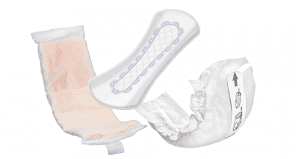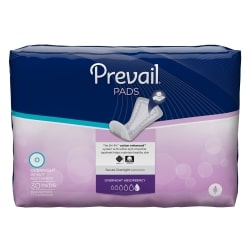A c-section and urinary incontinence can have a potential relationship. Finding out you’re pregnant can be a time that is full of excitement and joy! However, sometimes there may be some topics of concern that may come up along your journey. You might have a pre-existing health condition, or a problem arises, and your doctor may feel that having a traditional vaginal birth may be too risky. Some serious thoughts and conversations might lie ahead, and the topic of delivering your child via c-section (cesarean section) could be the safest choice.
While c-sections are generally considered safe, they can come with potential complications such as surgical site infections, bleeding, and scar tissue formation. In some cases, scar tissue from a c-section can lead to urinary incontinence, a condition where involuntary leakage of urine occurs. In this blog post, we will explore the relationship between a c-section and urinary incontinence, including the potential causes, risk factors, and treatment options.
What is a C-Section and When is it Needed?
What is a c-section?
Cesarean birth, which is often referred to as a c-section, is a surgical procedure performed by a doctor to deliver a newborn through an incision that is made in the abdomen and uterus. It may be a safer option rather than vaginal birth if the goal is to protect the newborn’s health or if the mother has a medical condition that can affect the pregnancy. A c-section can be either scheduled to coincide with the planned due date or it can be an emergency if the mother or baby’s health is in immediate danger.
What are some medical reasons a c-section may be needed?
 A c-section may be the best course of action to take due to potential complications that can make vaginal birth unsafe for the mother and/or her baby. A c-section can be necessary for any of the following reasons:
A c-section may be the best course of action to take due to potential complications that can make vaginal birth unsafe for the mother and/or her baby. A c-section can be necessary for any of the following reasons:
- The baby is too large for a vaginal birth. A very large baby sometimes simply cannot fit through the vaginal opening without causing significant damage.
- The baby is either sideways or breech (feet first instead of head first) in the womb. The position of the baby in this way can be dangerous as there is a risk that oxygen supply through the umbilical cord could be cut off if the baby gets stuck during delivery.
- The mother has a medical condition such as high blood pressure or diabetes. High blood pressure can be risky during pregnancy due to the stress that is put on the heart. When there is a high amount of sugar in the blood, as with diabetes, nerves and blood vessels can be damaged. Both of these medical conditions can make a c-section more favorable for the safety of the mother and her baby.
- If the mother has had a previous c-section, she is at a greater risk for complications during childbirth. There can be scar tissue buildup after each c-section making another incision more difficult and risk damage to the bladder or bowel.
- The mother might have an infection that could potentially be passed on to the baby during vaginal birth. As a safety precaution, a c-section would be a better choice in this case.
- When there are multiple babies in the womb, a c-section is a wise decision so that no harm is done to either the babies or the mother.
Can Scar Tissue From a C-Section Cause Bladder Problems?
Childbirth in itself causes strain and tears on a woman’s body. The uterus starts getting heavier as the infant grows, and the surrounding structures begin to stretch and weaken. Some women think that having a c-section will prevent them from side effects of vaginal birth, like urinary incontinence or fecal incontinence. However, studies have shown that having a c-section doesn’t protect women from suffering from urinary or fecal incontinence. Bladder issues, including a weak bladder after c-section, are quite common.
After the abdominal incision is made during a c-section, scar tissue is formed from collagen during the healing process. The collagen fibers of this scar tissue can extend deep into the layers below the skin and create bladder problems. Bladder issues after a c-section, such as urinary incontinence, can result when this scar tissue attaches to the wall of the bladder. After a woman gives birth, things begin to reduce back down in size, and this scar tissue pulls on the bladder, making her feel as though she needs to urinate more urgently (urge incontinence) or more often (overactive bladder).
How Long Does Urinary Incontinence from a C-Section Last?
Urinary incontinence from a c-section can take up to six months, or even longer for some women, to get their bladder functioning like normal again. There are several things that a woman can do to help the process along and get it back faster. In the interim, considering the use of incontinence products such as pads, liners, and protective underwear can help women get through the more difficult times.
Tips to Improve Urinary Incontinence Symptoms from a C-Section
Some of the ways a woman can treat urinary incontinence or a weak bladder after c-section to help her bladder get back to its normal function are:
Kegel Exercises
Strengthening the pelvic floor muscles after delivery is an important part of regaining bladder control. The stronger and more elastic these muscles are, the less stress or urge incontinence is experienced. Starting kegel exercises right after childbirth can greatly reduce urinary incontinence symptoms and get you on the path to normal bladder function sooner rather than later.
A Pessary Ring
A pessary ring is a small, soft, silicone vaginal ring that is inserted into the vagina. Women who can benefit from a pessary ring are those that have urinary incontinence that seems to be persistent. The pessary ring is placed inside the vagina to act as a “speed bump” for the urethra and is left there throughout the day. Some women prefer to use a pessary ring only when they engage in activities, while others put it in place in the morning and remove it in the evening. This device can be very helpful for women experiencing bladder issues after a c-section.
Electrical Stimulation Therapy
By sending mild electrical currents to the muscles in the pelvic floor that are involved in urination, these muscles then contract. By repeating this electrical stimulation pulse, the pelvic floor muscles begin to strengthen, producing a similar effect to what kegel exercises do. A doctor can perform this therapy or the patient can be given a unit to use in the privacy of their own home to help relieve their urinary incontinence symptoms.
Sling Surgery
One of the most common surgeries for urinary incontinence is sling surgery. In this minimally invasive procedure, the surgeon inserts a U- shaped mesh sling that permanently lifts and supports the urethra like a hammock. This procedure is quick, and important to note that it is also permanent, so women that choose this option should not consider any more pregnancies.
Lifestyle Changes
 There are many lifestyle changes that can also help women with urinary incontinence to regain bladder control. Many of these might be good to try before choosing some of the more permanent options.
There are many lifestyle changes that can also help women with urinary incontinence to regain bladder control. Many of these might be good to try before choosing some of the more permanent options.
- Remain at a healthy weight. Carrying around extra pounds can put pressure on the bladder and lead to urinary incontinence.
- Maintain a healthy diet. Alcohol, caffeine, and spicy foods tend to aggravate the bladder causing it to contract more often, making urine harder to control.
- Stay hydrated. Try to drink the recommended 8 ounces of water each day. Avoiding water as a way to control the number of times you need to use the restroom can result in a urinary tract infection or dehydration. Both are not good for a healthy bladder.
- Stop smoking. Nicotine causes bladder muscles to spasm, and women who smoke also often have a chronic cough. Frequent coughing episodes lead to urinary incontinence because of the pressure continuously put on the bladder.
- Pads, liners, and other incontinence products can help absorb leaks and help with urinary incontinence. There are so many options available to women that are concerned about discreetness and living a dignified lifestyle.
As you can see, there is a connection between a c-section and urinary incontinence, but you don’t have to let your bladder control your life. There are many options available to treat a weak bladder after c-section, such as urinary incontinence, even if you feel that you have exhausted all other avenues.
For questions about any of the incontinence products we carry to help with urinary or fecal incontinence, give us a call. One of our Personally Delivered Product Experts is happy to help.
Popular Incontinence Products for Women
Disclaimer: Important Notice Regarding Medical Advice
The information provided in this blog is intended for general informational purposes only and should not be considered a substitute for professional medical advice, diagnosis, or treatment.






